Energy
Buckle Up for Summer Blackouts: Wind Is Already Failing Texas in Spring
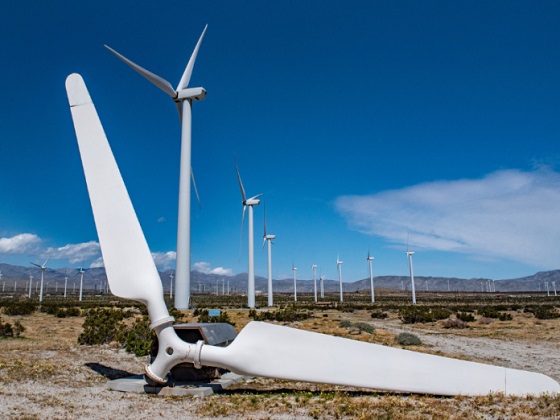
From Heartland Daily News
By Jason Isaac
When the wind blows too much, natural gas plants are forced to shut down because they can’t underbid wind producers that can bid zero or negative. But when the wind doesn’t blow when it is needed, wind generators can afford the loss of revenue because they earn so much from tax subsidies.
It’s been all quiet on the electric grid front for a few months — but don’t get your hopes up. Over the last month, electricity prices came near the $5000/MWh regulatory cap three separate times because the wind wasn’t blowing enough when the sun went down.
If this sounds familiar, you’re not wrong.
You may hear from the drive-by media that the problem is unseasonably warm temperatures, or that there are a lot of power plants down for maintenance. But high 80s in April and low 90s in May are not unusual, and the Texas grid used to manage these weather changes with no problems. From 2014 to 2016, real-time prices only went over $1000/MWh twice, but it’s happened three times already this year.
If the grid is already on shaky ground, with many weeks to go before blistering triple-digit temperatures shoot electric demand through the roof, all signs are pointing to an unpleasant summer.
The problem with the Texas grid is so simple it’s infuriating: Relying too heavily on unpredictable wind and solar, without enough reliable reserve capacity, means higher volatility — leading to higher prices and increasing need for expensive interventions by ERCOT to avoid outages. This is why your electric bill is going up and up even though wind and solar are supposed to be cheap.
While Texas certainly has a lot of sun, peak solar output almost never aligns with peak electric usage. The Lone Star State also has plenty of wind, but wind generation is wildly unpredictable — by nature. It’s not unusual for a wind generator’s output to swing 60 percentage points or more in a single week.
Take last month, for example. On Tuesday, April 16, electricity prices reached their cap because ERCOT’s day-ahead wind forecast was off by 50%. Five gigawatts of wind we were counting on to power Texas as the sun went down didn’t show up. That was the equivalent of simultaneously shutting down 10 large natural gas units, or all of the state’s nuclear capacity. If the latter occurred, the news media would be up in arms (and rightfully so). But because the culprit was the political darling of both the left and the right, no one heard about it.

ERCOT hasn’t been the best at predicting wind output, and the problem isn’t entirely its fault. Wind veers so wildly between extremes it’s nearly impossible to plan a sustainable grid around its fickleness — yet wind makes up 26% of our generating capacity.
It’s all because lucrative tax breaks and subsidies at the state and federal level, combined with flaws in ERCOT’s market design, make it almost impossible for wind to lose money — and harder than ever for natural gas to compete, even though it’s far more reliable and affordable. When the wind blows too much, natural gas plants are forced to shut down because they can’t underbid wind producers that can bid zero or negative. But when the wind doesn’t blow when it is needed, wind generators can afford the loss of revenue because they earn so much from tax subsidies.
Imagine trying to open a restaurant when your competitor next door is paying its customers to eat there. It’s no wonder natural gas capacity in ERCOT has barely grown over the past decade, and not enough to make up for losses of coal plants, while demand has been steadily increasing.
All those subsidies are hurting our most reliable, affordable energy producers and putting our economy at risk — leaving you and me, the taxpayers on the hook.
While most political issues are far more complex and nuanced than brazen attack ads and headlines would lead you to believe, in this case, it really does boil down to one simple problem.
And it would be easy to solve — if lawmakers are willing to go against the grain of political correctness and set a clear reliability standard for the wind and solar generators that want to connect to our grid.
Unfortunately, that’s a gargantuan “if.”
As a former lawmaker, I understand the pressures our legislators are under to toe the line on alternative energy. Major utilities embracing World Economic Forum- and United Nations-aligned “energy transition” policies that seek to redefine what’s “clean” and what’s “pollution” are making matters worse. And the incessant misinformation from their well-funded lobby that promise rural “economic development” and “cheap energy” sound too good to be true, because they are.
Elected officials don’t serve the lobby. They serve Texans — or, at least, they should.
And Texans want a reliable, affordable grid. They want to not have to worry about losing power in the heat of the summer or the dead of winter. The Legislature must put a stop to these market-distorting subsidies and make reliability, not popularity, the priority for our electric grid.
Gov. Greg Abbott sent a letter on July 6, 2021 to members of the Public Utility Commission of Texas (PUC) directing them to “take immediate action to improve electric reliability across the state.” The second directive was to “Allocate reliability costs to generation resources that cannot guarantee their own availability, such as wind or solar power.” Unfortunately, the PUC hasn’t acted on this directive or even studied it. The costs of scarcity on the grid are estimated to have exceeded $12B in 2023, which is equal to two-thirds of the property tax relief passed in the 88th Legislature, all paid for by ratepayers.
“Unfortunately for Texans, the ERCOT grid is moving from a single grid with gas and coal power plants running efficiently all day to two grids: one for wind and solar and one for expensive backup power that fills in the gaps when there is not enough wind and sun,” says Dr. Brent Bennett, policy director for Life:Powered at the Texas Public Policy Foundation. “Every time these scarcity events occur, whether due to real scarcity or artificial scarcity created by ERCOT’s operating policies, ratepayers are shelling out tens to hundreds of millions of dollars for backup power. It is the most expensive way to operate a grid, and Texans will feel the bite as these costs are absorbed over time.”
The Californication of our grid is unfolding before our eyes. If the Legislature and the PUC don’t act fast, the Texas miracle won’t last.
The Honorable Jason Isaac is CEO of the American Energy Institute and a senior fellow at the Texas Public Policy Foundation. He previously served four terms in the Texas House of Representatives
Alberta
Alberta’s number of inactive wells trending downward

Aspenleaf Energy vice-president of wells Ron Weber at a clean-up site near Edmonton.
From the Canadian Energy Centre
Aspenleaf Energy brings new life to historic Alberta oil field while cleaning up the past
In Alberta’s oil patch, some companies are going beyond their obligations to clean up inactive wells.
Aspenleaf Energy operates in the historic Leduc oil field, where drilling and production peaked in the 1950s.
In the last seven years, the privately-held company has spent more than $40 million on abandonment and reclamation, which it reports is significantly more than the minimum required by the Alberta Energy Regulator (AER).
CEO Bryan Gould sees reclaiming the legacy assets as like paying down a debt.
“To me, it’s not a giant bill for us to pay to accelerate the closure and it builds our reputation with the community, which then paves the way for investment and community support for the things we need to do,” he said.
“It just makes business sense to us.”
Aspenleaf, which says it has decommissioned two-thirds of its inactive wells in the Leduc area, isn’t alone in going beyond the requirements.
Producers in Alberta exceeded the AER’s minimum closure spend in both years of available data since the program was introduced in 2022.
That year, the industry-wide closure spend requirement was set at $422 million, but producers spent more than $696 million, according to the AER.
In 2023, companies spent nearly $770 million against a requirement of $700 million.
Alberta’s number of inactive wells is trending downward. The AER’s most recent report shows about 76,000 inactive wells in the province, down from roughly 92,000 in 2021.
In the Leduc field, new development techniques will make future cleanup easier and less costly, Gould said.
That’s because horizontal drilling allows several wells, each up to seven kilometres long, to originate from the same surface site.
“Historically, Leduc would have been developed with many, many sites with single vertical wells,” Gould said.
“This is why the remediation going back is so cumbersome. If you looked at it today, all that would have been centralized in one pad.
“Going forward, the environmental footprint is dramatically reduced compared to what it was.”

During and immediately after a well abandonment for Aspenleaf Energy near Edmonton. Photos for the Canadian Energy Centre
Gould said horizontal drilling and hydraulic fracturing give the field better economics, extending the life of a mature asset.
“We can drill more wells, we can recover more oil and we can pay higher royalties and higher taxes to the province,” he said.
Aspenleaf has also drilled about 3,700 test holes to assess how much soil needs cleanup. The company plans a pilot project to demonstrate a method that would reduce the amount of digging and landfilling of old underground materials while ensuring the land is productive and viable for use.

Crew at work on a well abandonment for Aspenleaf Energy near Edmonton. Photo for the Canadian Energy Centre
“We did a lot of sampling, and for the most part what we can show is what was buried in the ground by previous operators historically has not moved anywhere over 70 years and has had no impact to waterways and topography with lush forestry and productive agriculture thriving directly above and adjacent to those sampled areas,” he said.
At current rates of about 15,000 barrels per day, Aspenleaf sees a long runway of future production for the next decade or longer.
Revitalizing the historic field while cleaning up legacy assets is key to the company’s strategy.
“We believe we can extract more of the resource, which belongs to the people of Alberta,” Gould said.
“We make money for our investors, and the people of the province are much further ahead.”
Energy
Canada Cannot Become an Energy Superpower With its Regulatory Impediments
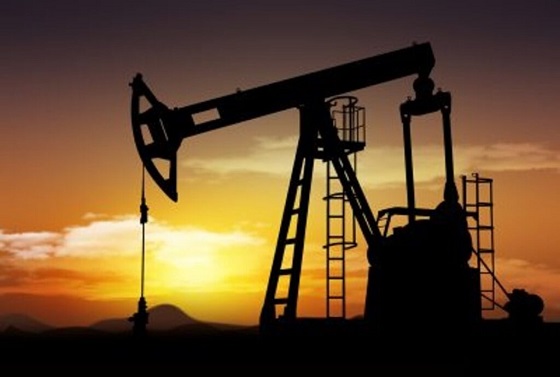
From Energy Now
By Yogi Schulz
Prime Minister Carney wants Canada to become an energy superpower. It’s a worthy goal because Canada has rich, undeveloped energy resources. Many Canadians happily endorse his goal because it achieves these benefits:
- Economic growth and prosperity for Canadians.
- Reduce the adverse consequences of American tariffs.
- Additional tax revenue that reduces the mountain of Canadian public debt.
- Improved energy security and reduced cost for Canadians in Eastern Canada.
- Improved energy security for Canada’s international energy customers.
- Alternative energy supply options for NATO allies to replace Russian energy.
- Greenhouse gas (GHG) reductions that occur when Canadian high ESG energy replaces other energy sources.
However, Canada can achieve these benefits only by overcoming multiple regulatory impediments, including those described below.
Interprovincial trade barriers
Interprovincial trade barriers impose costs on all industries. Consumers, not companies, bear these costs. A Macdonald-Laurier Institute study estimated that eliminating interprovincial trade barriers could boost Canada’s economy by between 4.4 and 7.9 percent over the long term or between $110 and $200 billion per year. Examples of interprovincial trade barriers that affect the oil and gas industry include:
- Pools that cross provincial boundaries: Producers must build two higher-cost processing facilities, one on each side of the border.
- Gathering systems that cross provincial boundaries: Producers must obtain a federal pipeline permit, which requires a multi-year approval process, to build a pipeline that crosses a provincial border.
- Many minor technical differences: Provinces set their own rules, standards, and certifications for topics such as vehicle weight, length, and safety protocols. These differences increase producer operating costs.
- Professional licensing: Individuals, such as those in skilled trades, must undergo a lengthy, costly process to obtain a license to work in another province, even if they are already certified elsewhere.
- Administrative hurdles: Producers operating in multiple provinces face a complex web of permit, license, and reporting requirements that vary from one province to the next.
- Geographical barriers: The dimensional limitations of tunnels in the Rocky Mountains create a shipping barrier for producers, adding costs when importing large facility components.
For Canada to achieve energy superpower status, reducing interprovincial trade barriers will be necessary to enhance its competitiveness. The Canadian Free Trade Agreement (CFTA) and the Free Trade and Labour Mobility in Canada Act are encouraging federal initiatives to reduce interprovincial trade barriers. The outrageous Trump tariffs have also provided some provinces with a new incentive to lower or eliminate some of their barriers. However, the “mutual recognition” approach may be more symbolic than substantive.
Provincial regulatory incompatibilities
Oil and natural gas producers face slightly different regulations in every province and territory. These incompatibilities incur avoidable operational costs and erode Canada’s competitiveness in the global investment capital market.
Energy industry regulators operate in every province and territory where oil and natural gas are produced. These regulators have independently produced large volumes of regulations that are similar but far from identical. Most of these regulations are derived from those first written in Alberta and various US jurisdictions. Alberta created the first Canadian energy industry regulator because most of the resources are located within its borders.
So far, energy industry regulators have only harmonized the following:
- Canadian Standards Association (CSA) Z662 Oil and Gas Pipeline Systems. British Columbia, Alberta and Saskatchewan have adopted this standard.
- Directive 017 – Measurement Requirements for Oil and Gas Operations. Alberta and Saskatchewan have adopted this directive.
Unfortunately, only these two documents, among many dozens, have been harmonized. Parochial thinking appears to be a significant impediment to more harmonization. For example:
- Some Canadian regulators participate in the Western Regulators Forum (WRF). However, the WRF has yet to harmonize any regulations.
- Over two decades ago, the Alberta Department of Energy and Minerals sponsored the development of Petrinex with a vision of energy industry-government data management cooperation across multiple provinces. However, the vision has not been realized because the provinces built individual, incompatible systems to protect their turf.
“Producers write more government submissions than technical papers – ten times more. Submissions consume significant effort from technical professionals and include specific oil and gas technical information such as fracking schemes, SAGD operations or facility modifications,” says Granger Low, of Regaware Systems Ltd. “When producers can easily search previous submissions using the artificial intelligence of AppIntel AI, they take advantage of Alberta’s uniquely remarkable oil and gas technical advances, and avoid the delays related to over-regulation and resubmission.”
For Canada to achieve energy superpower status, harmonizing more provincial and territorial oil and natural gas industry regulations will be required to improve its competitiveness.
Provincial regulatory issues
Dealing with regulations is a cost that all oil and natural gas producers bear. Regulations are desirable and necessary to a point. Issues where the energy industry regulators could improve performance include:
- Reducing and simplifying the enormous number of directives. The issue is that the directives contain extensive related best practices that, while valuable, become indistinguishable from regulatory requirements.
- Reducing and simplifying the permit application processes for wells, facilities and pipelines. How the current complexity helps regulators fulfill their mandate is unclear.
- Simplifying reporting and compliance assessment would reduce administrative costs for both producers and regulators.
- Eliminating the APMC in Alberta would reduce producers’ administrative costs and increase Crown royalty revenue. This article describes the details: It’s Time to Retire the APMC – The APMC Mandate Has Expired, Its Cost is Now Avoidable.
- Failing to address data quality issues for wells, digital well logs, and cores undermines one of Alberta’s competitive advantages.
For Canada to achieve energy superpower status, reducing the cost of regulatory applications and compliance is a component of improving its competitiveness.
Taxation disparities
Oil and natural gas producers encounter taxation disparities across provinces. The following disparities affect geographic investment decisions:
- Crown Royalty and Freehold Production Tax calculations and related settlement processes vary considerably by province and type of production.
- Corporate income tax rates and reporting vary by province.
- The combined GST and PST/HST rate varies from 5% in Alberta to 15% in some other provinces.
- Oil and natural gas facility property tax rates and reporting vary by province.
Simplifying these taxation disparities would reduce administrative costs for both producers and the Crown. The combination of taxes and fees that producers pay in Canada is enough to cause some to invest in more profitable jurisdictions.
For Canada to achieve energy superpower status, reducing and harmonizing taxation disparities is a prerequisite to encourage more investment in production.
Additional costs that every producer accepts
Overcoming impediments is particularly important to Canadian competitiveness because the Canadian oil and gas industry incurs higher operating costs than the industry does in most other jurisdictions. The higher cost categories include:
- Wages and benefits.
- Health, safety and environmental standards.
- Abandonment standards.
- Disclosure of intellectual property in publicly-accessible permit application documents.
- Lower staff productivity and added heating costs due to lower winter temperatures.
No one is suggesting lowering these Canadian standards and expectations. However, the associated costs increase the urgency of reducing other regulatory impediments to maintain Canada’s competitiveness.
Conclusions
Canada has the resources to become an energy superpower and realize the immense economic, strategic, and environmental benefits that are available. Policymakers can contribute by harmonizing regulations and removing interprovincial trade barriers to ensure investment in Canadian energy is competitive on world financial markets.
Yogi Schulz has over 40 years of experience in information technology in various industries. He writes for Engineering.com, EnergyNow.ca, EnergyNow.com and other trade publications. Yogi works extensively in the petroleum industry to select and implement financial, production revenue accounting, land & contracts, and geotechnical systems. He manages projects that arise from changes in business requirements, the need to leverage technology opportunities, and mergers. His specialties include IT strategy, web strategy, and systems project management.
-

 espionage2 days ago
espionage2 days agoU.S. Charges Three More Chinese Scholars in Wuhan Bio-Smuggling Case, Citing Pattern of Foreign Exploitation in American Research Labs
-
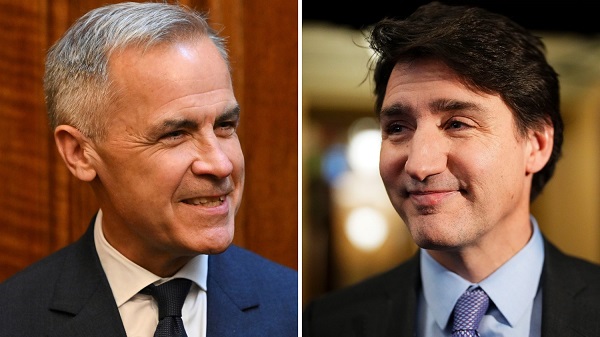
 Business23 hours ago
Business23 hours agoCarney’s Deficit Numbers Deserve Scrutiny After Trudeau’s Forecasting Failures
-
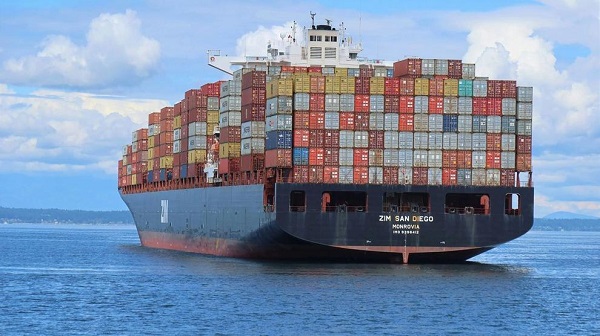
 Business2 days ago
Business2 days agoU.S. Supreme Court frosty on Trump’s tariff power as world watches
-

 Business1 day ago
Business1 day agoHere’s what pundits and analysts get wrong about the Carney government’s first budget
-

 International23 hours ago
International23 hours agoKazakhstan joins Abraham Accords, Trump says more nations lining up for peace
-

 Daily Caller2 days ago
Daily Caller2 days agoUN Chief Rages Against Dying Of Climate Alarm Light
-
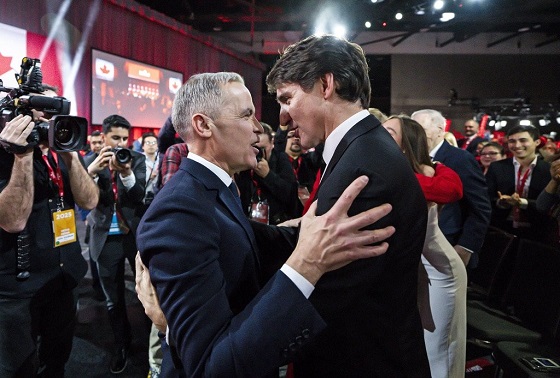
 Business1 day ago
Business1 day agoCarney budget doubles down on Trudeau-era policies
-

 Automotive22 hours ago
Automotive22 hours agoElon Musk Poised To Become World’s First Trillionaire After Shareholder Vote




